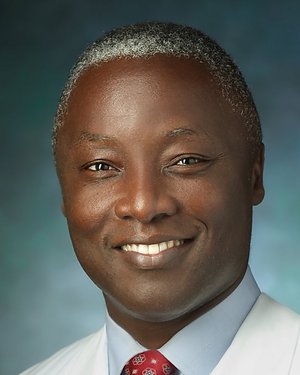-
Damon Cooney, MD PhD

- Clinical Director, Face Transplant Program, Johns Hopkins Comprehensive Transplant Center
- Associate Professor of Plastic and Reconstructive Surgery
-
Robin Yang, MD DDS

- Director of Pediatric Plastic Surgery
- Assistant Professor of Plastic and Reconstructive Surgery
Regain Confidence After Facial Trauma
Reconstructive facial transplants can transform the lives of adults who have had severe trauma or disfigurement to their face. Our multidisciplinary team of reconstructive surgeons collaborate with different departments to provide the best quality of long-term care for facial transplant recipients.
IRB #NA_00067257
Why Choose Johns Hopkins for Face Transplant Surgery?
Experienced Facial Transplant Surgeons

Care for Wounded Veterans

Comprehensive Research

Frequently Asked Questions about Face Transplants
-
Patients may need a face transplant, or a vascularized composite allograft (VCA) of the face, if they have had a severe injury and disfigurement from a traumatic injury, burns, or acquired malformations.
The reconstructive transplant team coordinates with the Burn Center at Johns Hopkins Bayview Medical Center to provide care and healing for burn victims. Patients here benefit from having access to top plastic surgeons and a multidisciplinary team of experts trained in treating burn wounds.
-
Since 2021, more than 45 patients have received full or partial face transplants at institutions around the world.
-
Patients waiting for a face donation can be called into the hospital for surgery at any time. Facial transplant surgery typically takes 12-36 hours, depending on how much and which parts of the face need to be restored. After surgery, you will be placed in a surgical intensive care unit (SICU) for about one week.
Once the surgical team feels comfortable with you being moved out of the SICU, you will move to a transplant unit, where you will receive care specially designed for all types of transplant patients. You can expect to be in the hospital for about 3-4 weeks.
The amount of time spent in the hospital depends on several things, including the amount of support and assistance you have at home, the distance from your home to the hospital for follow-up care, and any delays that might occur in recovery.
-
Face donation is not included in the commonly used driver’s license organ donation registry. Facial donation requires a special and sensitive consent process with donor families. For Johns Hopkins patients, this process is done through specially trained and experienced coordinators from the Living Legacy Foundation of Maryland, the organ procurement organization for the state of Maryland (with the exception of Charles, Montgomery and Prince Georges counties, which are covered by the Washington Regional Transplant Community).
In addition to matching a donor to a recipient based on tissue and blood tests, selecting a donor for a facial transplant must also involve careful emphasis on matching skin color, skin tone, gender, ethnicity/race, and the size of the face.
-
Once you are approved for a face transplant, you will have to wait for a matching donor to become available. This can range from a few weeks to several months. The donor must have matching blood and tissue types as well as matching skin color, skin tone, gender, ethnicity, race and size of the face and head.
-
Patients receiving a face transplant should be prepared for extensive rehabilitation, which can last from four to six months. Some parts of rehabilitation may be required for life. The goal for rehabilitation is for the patient to regain function and movement so that he or she can participate confidently in daily activities. The functional duties of the face include speech, communication, smiling, eating and drinking, blinking, and emotional expression. Medical providers involved with rehabilitation may include the following:
- Speech-language pathologist
- Physical therapist
- Occupational therapist
- Respiratory therapist
- Social worker/case manager
- Nutritionist
- Nursing staff
- Psychologist
- Physiatrist
- Dentist
- Prosthetist
Therapy exercises may include muscle relaxation or stimulation, mirror exercises, facial expression training, speech and swallowing training, re-educating the olfactory system, and more.
-
Rejection refers to the body’s immune response towards the newly transplanted limb. Believing the tissues to be “foreign,” the body’s natural response is to attack and can occur within days to months after transplant.
Rejection can appear as a rash that could be spotty, patchy or blotchy. It could appear anywhere on the transplant and is usually painless. As rejection almost always appears first in the skin, patients and their caregivers are encouraged to carefully watch for the signs and report to the physician for timely biopsy and treatment. Unlike internal organ transplants, it is easy to detect and monitor signs of rejection in the face. This allows for early medical intervention.
Meet Our Face Transplant Specialists
Nurse




